-
 Bitcoin
Bitcoin $114800
-3.31% -
 Ethereum
Ethereum $3641
-5.84% -
 XRP
XRP $2.948
-6.36% -
 Tether USDt
Tether USDt $0.9998
-0.03% -
 BNB
BNB $772.4
-3.97% -
 Solana
Solana $169.1
-6.68% -
 USDC
USDC $0.9999
-0.01% -
 Dogecoin
Dogecoin $0.2056
-8.09% -
 TRON
TRON $0.3247
-0.18% -
 Cardano
Cardano $0.7239
-7.43% -
 Hyperliquid
Hyperliquid $39.71
-8.60% -
 Stellar
Stellar $0.3912
-7.84% -
 Sui
Sui $3.510
-10.17% -
 Chainlink
Chainlink $16.59
-8.03% -
 Bitcoin Cash
Bitcoin Cash $560.5
-3.65% -
 Hedera
Hedera $0.2464
-10.08% -
 Avalanche
Avalanche $22.03
-7.87% -
 Ethena USDe
Ethena USDe $1.001
-0.02% -
 UNUS SED LEO
UNUS SED LEO $8.947
0.21% -
 Toncoin
Toncoin $3.389
-2.58% -
 Litecoin
Litecoin $104.9
-5.23% -
 Shiba Inu
Shiba Inu $0.00001220
-6.67% -
 Polkadot
Polkadot $3.652
-6.10% -
 Uniswap
Uniswap $9.213
-9.05% -
 Monero
Monero $307.2
-2.93% -
 Dai
Dai $0.9998
-0.02% -
 Bitget Token
Bitget Token $4.367
-2.89% -
 Cronos
Cronos $0.1374
-6.80% -
 Pepe
Pepe $0.00001056
-8.65% -
 Aave
Aave $257.3
-7.31%
Why do moving averages lag and what is the impact of this lag in crypto trading?
Moving averages lag because they rely on past price data, making them reactive—not predictive—especially in fast-moving crypto markets.
Jul 31, 2025 at 08:07 pm
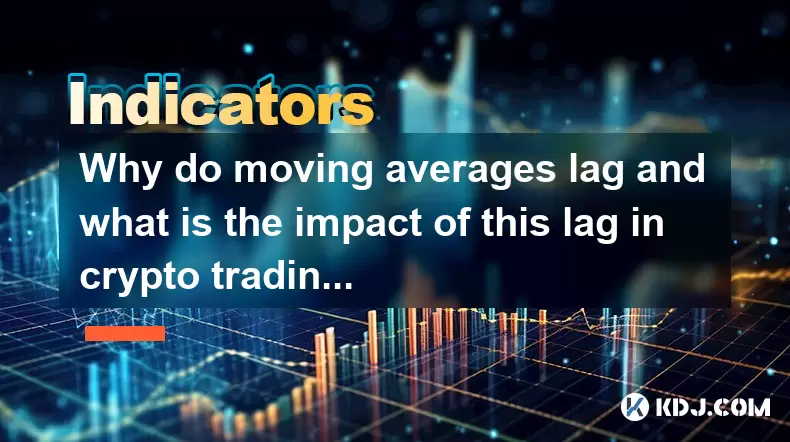
Understanding the Concept of Moving Averages in Crypto Trading
Moving averages are among the most widely used technical indicators in cryptocurrency trading due to their simplicity and effectiveness in identifying trends. A moving average (MA) calculates the average price of a digital asset over a specific number of periods, smoothing out price data to form a single flowing line. This line helps traders visualize the direction of the trend and filter out market noise. Common types include the Simple Moving Average (SMA) and the Exponential Moving Average (EMA), each with its own method of calculation and sensitivity to price changes.
Despite their utility, all moving averages are inherently lagging indicators. This means they are based on historical price data and do not predict future price movements. Instead, they reflect what has already occurred in the market. The lag arises because the moving average only updates after new price data is incorporated, making it inherently reactive rather than predictive. This characteristic is especially pronounced in the volatile environment of crypto markets, where prices can shift dramatically within minutes.
Why Moving Averages Lag Behind Price Action
The primary reason moving averages lag is their dependence on past data. For instance, a 50-period SMA takes the sum of the closing prices over the last 50 time intervals and divides it by 50. As each new candlestick closes, the oldest price is dropped and the newest is added. Because the average is constantly recalculated using historical values, it cannot respond instantly to sudden price changes.
Another contributing factor is the smoothing effect built into moving averages. By design, they reduce short-term fluctuations to highlight longer-term trends. While this is beneficial for identifying sustained movements, it delays the indicator’s response to reversals or breakouts. For example, if Bitcoin experiences a sharp upward spike, the moving average will only begin to reflect this change after several periods, causing it to trail behind the actual price.
The length of the moving average also affects the degree of lag. A 200-period MA will react much slower than a 10-period MA because it incorporates more historical data. In fast-moving crypto markets, this delay can result in missed entry or exit opportunities, especially during high-volatility events such as halvings or macroeconomic announcements.
Impact of Lag on Entry and Exit Timing
The lag in moving averages directly influences trade execution timing. When a trader relies on a crossover strategy—such as the 50-day MA crossing above the 200-day MA (a "golden cross")—the signal often appears after a significant portion of the price move has already occurred. This delay means the trader may enter a position at a less favorable price, reducing potential profit margins.
- Monitor the current price relative to the moving average line
- Wait for confirmation of a crossover across multiple timeframes
- Use additional indicators like RSI or MACD to validate the signal
- Set entry orders slightly ahead of the confirmed MA crossover to mitigate delay
In highly speculative assets like altcoins, where momentum can reverse quickly, this lag may lead to entering a trend too late and exiting after a reversal has already begun. For example, if Ethereum breaks out from a consolidation phase, the moving average might not reflect the new trend until the price has already surged 15–20%, leaving latecomers vulnerable to pullbacks.
Strategies to Minimize the Effects of Lag
Traders can reduce the impact of moving average lag by combining them with leading indicators or adjusting their parameters. One effective method is using the Exponential Moving Average (EMA), which assigns greater weight to recent prices, making it more responsive than the SMA. For instance, a 12-period EMA will react faster to price changes than a 12-period SMA.
Another approach involves using shorter timeframes in conjunction with longer ones. A trader might monitor a 9-period EMA on a 15-minute chart while referencing a 50-period SMA on the daily chart for trend context. This multi-timeframe analysis helps identify early signs of momentum shifts before the longer MA confirms the trend.
Additionally, traders can apply price action techniques alongside moving averages:
- Look for candlestick patterns near key MA levels
- Observe volume spikes that coincide with MA crossovers
- Use support and resistance zones to anticipate where MAs might react
- Apply Fibonacci retracement levels to predict potential reversal points near moving averages
These methods help anticipate moves rather than simply reacting to them, effectively compensating for the inherent delay.
Psychological and Risk Management Implications
The lag of moving averages also affects trader psychology and risk exposure. Because signals arrive late, traders may experience frustration or doubt when entering trades after a large move. This can lead to hesitation or premature exits, undermining strategy consistency. Recognizing that lag is an inherent feature—not a flaw—helps maintain discipline.
From a risk management perspective, relying solely on moving averages without confirmation increases the likelihood of false signals, especially in choppy or sideways markets. For example, during a range-bound phase in Solana’s price, the MA may generate multiple whipsaw signals, triggering unnecessary trades. To counter this, traders should:
- Set stop-loss orders based on volatility (e.g., using ATR)
- Avoid trading MA crossovers in low-volume or consolidating markets
- Combine MAs with trend strength indicators like ADX
- Adjust position size when signals are borderline or delayed
These practices ensure that the lag does not compromise capital preservation.
Frequently Asked Questions
Can moving averages ever lead price instead of lagging?
No, moving averages cannot lead price by design. They are calculated from historical data, which means they always follow price action. However, shorter-period EMAs may appear to react more quickly, giving the illusion of leading, but they still rely on past closes.
Is the lag more problematic in crypto than in traditional markets?
Yes, due to the high volatility and 24/7 nature of crypto markets, price moves faster and more unpredictably than in traditional markets. This amplifies the impact of MA lag, making delayed signals more costly in terms of missed opportunities or increased drawdowns.
How do I choose the right moving average period to reduce lag?
The optimal period depends on your trading style. Day traders may use 9 to 21-period EMAs for faster responses, while swing traders might prefer 50 to 100-period SMAs for smoother trends. Backtesting on historical crypto data helps identify effective settings for specific assets.
Do volume-weighted moving averages eliminate lag?
Volume-weighted moving averages (VWMA) incorporate trading volume into the calculation, giving more weight to periods with higher activity. While this improves responsiveness during high-volume breakouts, it does not eliminate lag, as it still relies on past price and volume data.
Disclaimer:info@kdj.com
The information provided is not trading advice. kdj.com does not assume any responsibility for any investments made based on the information provided in this article. Cryptocurrencies are highly volatile and it is highly recommended that you invest with caution after thorough research!
If you believe that the content used on this website infringes your copyright, please contact us immediately (info@kdj.com) and we will delete it promptly.
- Bitcoin, Ethereum, and Investor Behavior: A New York Minute on Crypto Trends
- 2025-08-01 15:10:12
- Tether's Q2 Triumph: USDT Supply Soars Amidst Profit Surge!
- 2025-08-01 15:10:12
- Ethereum ETF Holdings: A Corporate Treasury Revolution?
- 2025-08-01 15:30:12
- Ethereum's Wild Ride: Funding Rates, Price Drops, and Retail to the Rescue!
- 2025-08-01 15:30:12
- Ethereum Under Pressure: Crypto Market Drop Explained
- 2025-08-01 15:35:11
- Ethereum ETF Mania: Inflows Surge, Market Rises, What's Next?
- 2025-08-01 15:35:11
Related knowledge

What is the difference in KDJ signal interpretation between a trending and a ranging market?
Aug 01,2025 at 03:56pm
Understanding the KDJ Indicator in Cryptocurrency TradingThe KDJ indicator is a momentum oscillator widely used in cryptocurrency trading to identify ...

Does the KDJ indicator work well for low-liquidity crypto assets?
Aug 01,2025 at 02:01pm
Understanding the KDJ Indicator in Cryptocurrency TradingThe KDJ indicator is a momentum oscillator derived from the Stochastic Oscillator, widely use...
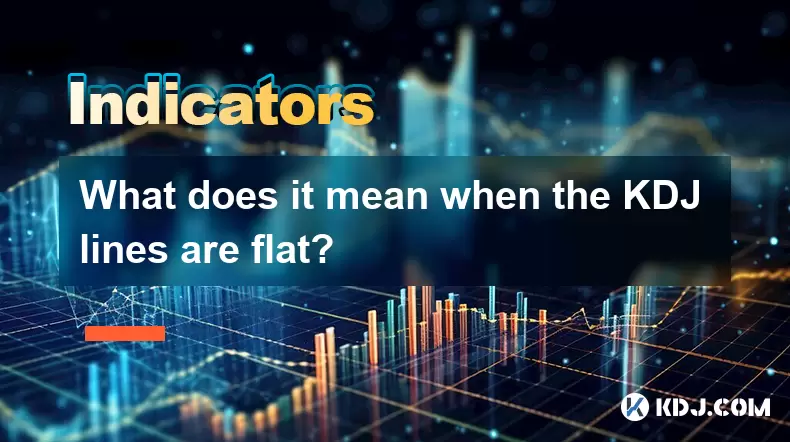
What does it mean when the KDJ lines are flat?
Aug 01,2025 at 03:22pm
Understanding the KDJ Indicator in Cryptocurrency TradingThe KDJ indicator is a momentum oscillator widely used in cryptocurrency technical analysis t...
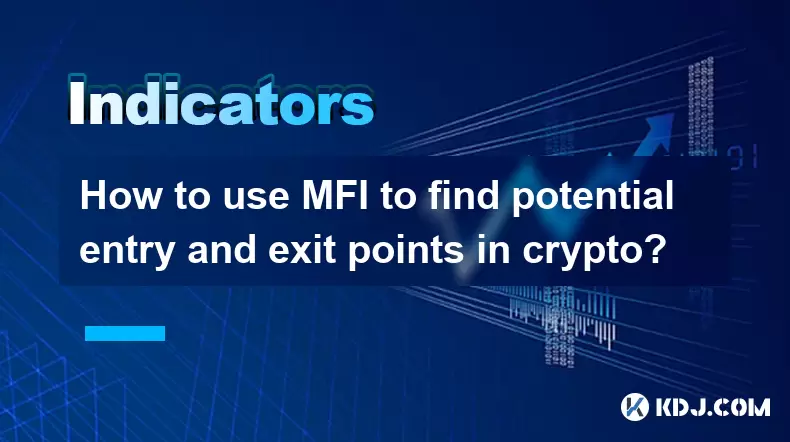
How to use MFI to find potential entry and exit points in crypto?
Aug 01,2025 at 02:35pm
Understanding the MFI Indicator in Cryptocurrency TradingThe Money Flow Index (MFI) is a momentum oscillator used to measure the strength and directio...
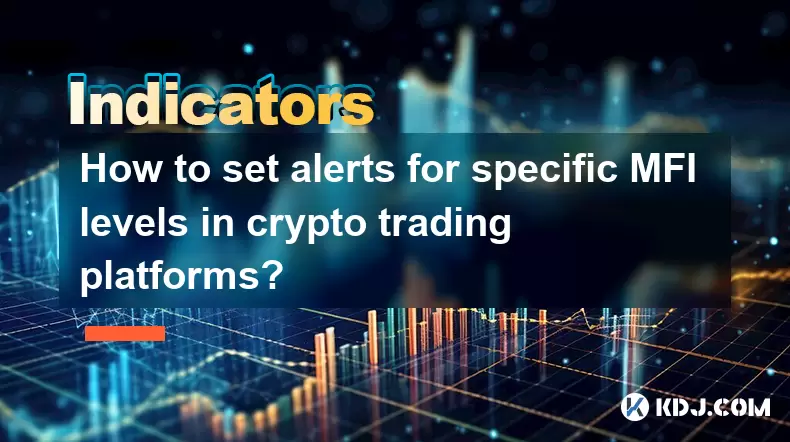
How to set alerts for specific MFI levels in crypto trading platforms?
Aug 01,2025 at 12:42pm
Understanding the Money Flow Index (MFI) in Crypto TradingThe Money Flow Index (MFI) is a momentum oscillator that measures the flow of money into and...
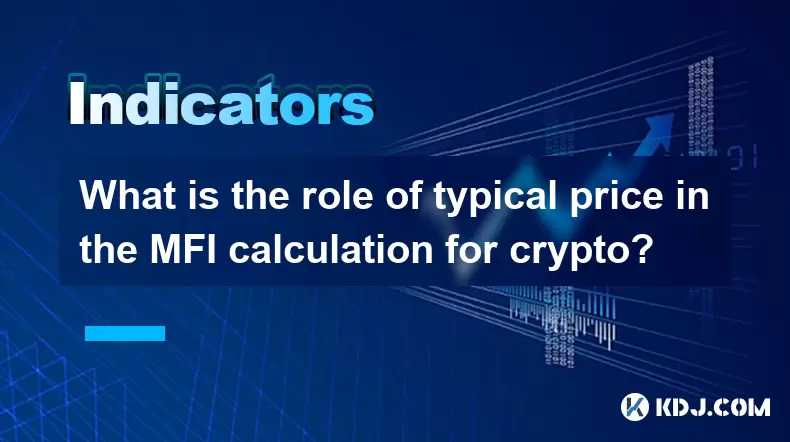
What is the role of typical price in the MFI calculation for crypto?
Aug 01,2025 at 12:21pm
Understanding the Typical Price in MFI for Cryptocurrency AnalysisThe Typical Price plays a crucial role in the calculation of the Money Flow Index (M...

What is the difference in KDJ signal interpretation between a trending and a ranging market?
Aug 01,2025 at 03:56pm
Understanding the KDJ Indicator in Cryptocurrency TradingThe KDJ indicator is a momentum oscillator widely used in cryptocurrency trading to identify ...

Does the KDJ indicator work well for low-liquidity crypto assets?
Aug 01,2025 at 02:01pm
Understanding the KDJ Indicator in Cryptocurrency TradingThe KDJ indicator is a momentum oscillator derived from the Stochastic Oscillator, widely use...

What does it mean when the KDJ lines are flat?
Aug 01,2025 at 03:22pm
Understanding the KDJ Indicator in Cryptocurrency TradingThe KDJ indicator is a momentum oscillator widely used in cryptocurrency technical analysis t...

How to use MFI to find potential entry and exit points in crypto?
Aug 01,2025 at 02:35pm
Understanding the MFI Indicator in Cryptocurrency TradingThe Money Flow Index (MFI) is a momentum oscillator used to measure the strength and directio...

How to set alerts for specific MFI levels in crypto trading platforms?
Aug 01,2025 at 12:42pm
Understanding the Money Flow Index (MFI) in Crypto TradingThe Money Flow Index (MFI) is a momentum oscillator that measures the flow of money into and...

What is the role of typical price in the MFI calculation for crypto?
Aug 01,2025 at 12:21pm
Understanding the Typical Price in MFI for Cryptocurrency AnalysisThe Typical Price plays a crucial role in the calculation of the Money Flow Index (M...
See all articles

























































































